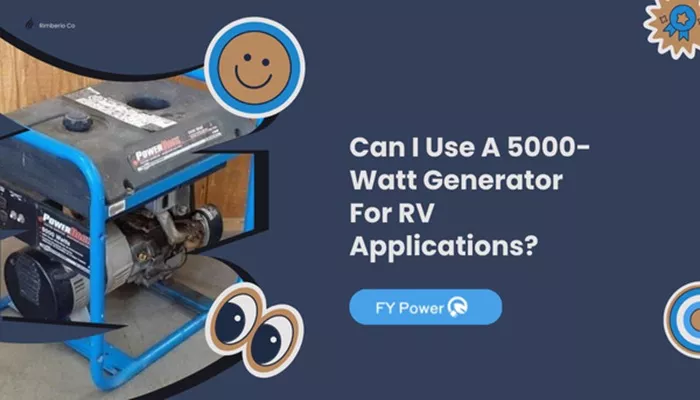A 5000 watt generator is a mid-sized power source designed to provide electricity in situations where grid power is unavailable. These generators are commonly used for outdoor activities, construction sites, or emergency backup during short-term outages. They are powered by fuel, such as gasoline, propane, or diesel, and convert mechanical energy into electrical energy. Their portability and moderate output make them a popular choice for users needing temporary or partial power solutions.
The capacity of a generator refers to the maximum load it can handle at once. A 5000 watt unit can simultaneously support multiple devices, but its ability to power an entire household depends on the energy demands of the home. Understanding the relationship between generator capacity and household appliances is critical to determining its suitability.
How Household Power Needs Work
Homes rely on electricity to operate essential systems and appliances. These include lighting, refrigeration, heating or cooling systems, communication devices, and medical equipment. Each appliance requires a specific amount of power to start and run. Starting power, or surge power, is the initial burst of energy needed to activate motors or compressors, while running power is the sustained energy required to keep the device operational.
Larger appliances like air conditioners, electric stoves, or water heaters consume significantly more power than smaller devices like lamps or phone chargers. The total power demand of a house fluctuates based on which appliances are in use and their individual energy requirements. Managing these demands is key to using a generator effectively.
Can a 5000 Watt Generator Support a Home?
The short answer is yes—but with limitations. A 5000 watt generator can power essential appliances during an outage, provided the user carefully prioritizes their energy consumption. However, it cannot sustain the full operation of a modern home with high-energy systems running simultaneously.
Essential Appliances: A generator of this size can typically handle critical items such as a refrigerator, lights, a fan, a television, and charging ports for small electronics. These devices have moderate power requirements and do not overload the generator when used sparingly.
High-Power Appliances: Heating and cooling systems, electric water heaters, ovens, or washing machines often exceed the generator’s capacity. Attempting to run these simultaneously with other devices may trip the generator’s circuit breaker or cause damage.
Fuel Efficiency and Runtime: A 5000 watt generator’s runtime depends on fuel type and load. At half capacity, it may run for several hours on a single tank, but continuous operation requires frequent refueling. This makes it impractical for prolonged outages without a steady fuel supply.
Key Limitations to Consider
A 5000 watt generator is not a whole-house solution. Its limitations become apparent in homes with central air conditioning, electric heating, or multiple large appliances. For example, a central HVAC system alone can consume nearly the generator’s total capacity, leaving little room for other devices.
Another challenge is managing surge power. Even if an appliance’s running power is within the generator’s limit, its startup surge might temporarily exceed capacity. This can cause the generator to shut off or destabilize the power supply, potentially damaging connected devices.
Noise and portability are additional factors. These generators are often loud, which may violate local noise ordinances. Their portable design also means they lack the automatic transfer switches and permanent installation features of standby generators, requiring manual setup during emergencies.
Comparing Generator Types for Home Use
Portable generators like the 5000 watt model are ideal for temporary or selective power needs. They are affordable, easy to store, and suitable for powering a few critical appliances. However, they lack the automation and capacity of standby generators, which are permanently installed and can power an entire home.
Inverter generators are another option, offering quieter operation and cleaner energy for sensitive electronics. While they are efficient, their higher cost and lower output make them less practical for whole-house backup compared to a 5000 watt conventional generator.
Practical Tips for Using a 5000 Watt Generator
To maximize effectiveness, homeowners should:
Prioritize Needs: Identify essential appliances and avoid non-critical devices.
Stagger Usage: Operate high-power appliances one at a time to prevent overload.
Use Surge Protectors: Protect electronics from voltage fluctuations.
Maintain Fuel Safety: Store fuel in approved containers and away from living areas.
Follow Manufacturer Guidelines: Regular maintenance ensures reliability and longevity.
Conclusion
A 5000 watt generator can serve as a reliable backup for partial home power during outages, but it requires careful management. By understanding its capabilities and limitations, users can maintain critical functions without overloading the system. For households with higher energy demands or a need for uninterrupted power, investing in a larger standby generator may be more practical. Always consult a licensed electrician to assess your home’s specific requirements and ensure safe generator operation.

